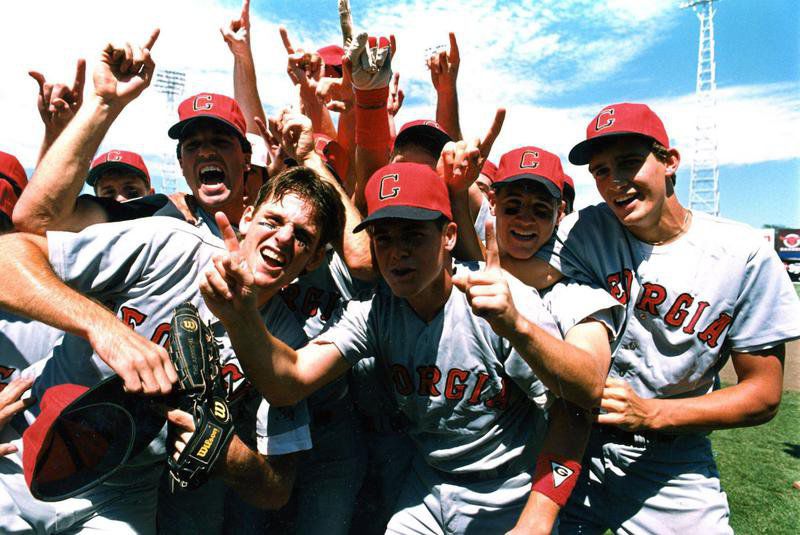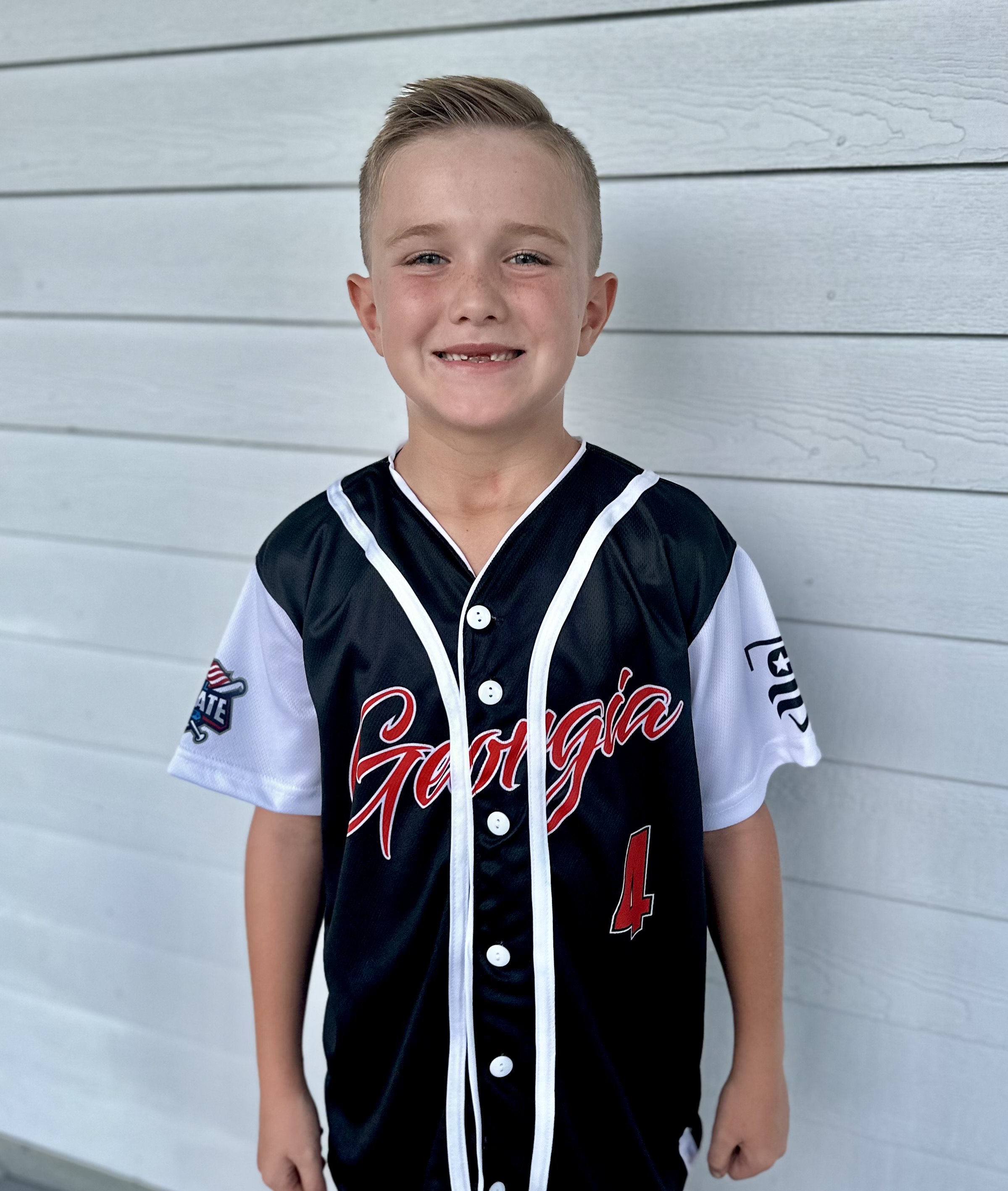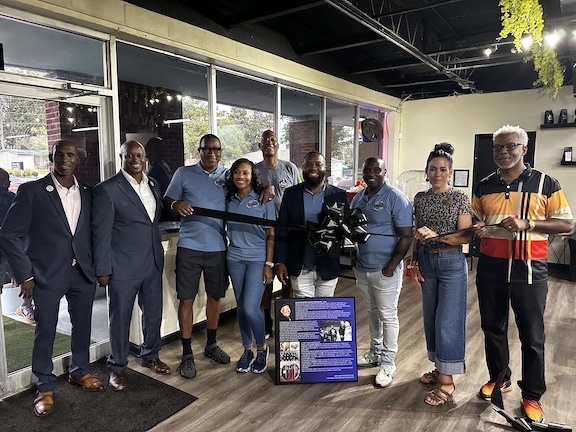30 years since Omaha: Building Georgia baseball’s lone championship squad
Published 12:52 pm Monday, June 1, 2020

- Photo courtesy of The Red & BlackGeorgia baseball's one and only national championship victory came in 1990. The team fielded four All-Americans and one future big-leaguer to overcome the odds and secure its name both in the university's history books and on the left field wall of Foley Field.
On June 1, 1990, the Georgia baseball team played its first game of the 1990 College World Series in Omaha, Nebraska. They beat Mississippi State 3-0. It was the first CWS game won in the program’s history and would be followed by three more victories over the next eight days until the Bulldogs were crowned champions on June 9. Despite four CWS appearances over the next three decades, the 1990 team’s feat has never been repeated. In part one of The Red & Black’s three-part series on the team, its season and its underdog world series run, we examine the ingredients necessary to cook up a title-winning team.
Something special was brewing on the edge of South Campus in the fall of 1989. It was almost alchemy.
Trending
A careful recipe of talent, honed by the straight-laced focus of head coach Steve Webber and combined with a heavy dose of chemistry, transformed Georgia baseball from dusty red clay into dazzling Omaha gold.
“Everything has got to fall in place,” former Georgia athletic director Vince Dooley said. “And they fell in place for that team that year.”
The foundation
1987 was the first year Georgia made it to the College World Series. It was the only Diamond Dog team to top the SEC regular season standings between 1954-2001, but regional success isn’t enough in college baseball, where fortunes can turn sour from one game or even one inning to the next.
Despite winning four sudden-death games in the Atlanta Regional to make it to the 1987 CWS, the Bulldogs suffered two consecutive one-run losses and were booted back to Athens.
“In ‘87, we didn’t know anything,” then-assistant head coach Greg Appleton said. “We were just happy to be going out there getting on a plane. That was all new stuff to us.”
Trending
Not until 1990 did Georgia baseball finally emerge from the anonymous fringe to the center of the national spotlight.
The team
By 1990, four of the freshmen who’d watched the 1987 run from the dugout were in their final year at Georgia. The team’s bullpen was stocked with the one-two pitching punch of All-American Dave Fleming and future CWS Most Outstanding Player Mike Rebhan, who were backed by freshman left-hander and second-round pick in the 1989 MLB draft Stan Payne.
Webber had amassed a solid lineup — six of his starting nine would bat over .300 in 1990 — but with only one future big-leaguer in Fleming on its roster, the Bulldogs didn’t match up on paper with the star-studded casts of foes such as LSU, Stanford or Oklahoma State.
Something else would have to get them to Omaha, something that could take a historically underachieving SEC team and make them greater than the sum of their individual parts.
Is it too naive to say it was friendship?
“I’ve told anybody that will listen,” then-freshman left fielder Ray Suplee said. “That team was really special for a couple of reasons. We did life together. There weren’t the typical cliques of big-city versus country … there wasn’t a cool group and an outcast group. From day one, it was ‘the front of the jersey is the most important. We’re all in this together, let’s go.’ We were a very close team.”
From fishing expeditions to extra work in the weight room to library trips to dart-throwing at the newly opened Globe bar downtown, the team built its cohesion. It built trust, which translated directly to the diamond.
Everyone knew their role. Everyone had faith that their teammates would do what they did best, whether it was junior J.R. Showalter being a human vacuum at shortstop or freshman third-string catcher J.P. Stewart warming-up Fleming and Rebhan in the bullpen.
Suplee credited the team’s seniors with instilling its culture of camaraderie. But it went both ways.
“You’ve got to have really talented freshmen,” then-senior Brian Jester said. “[Who are] selfless players. I think sometimes the older guys can see that and you go ‘wow, this guy’s a pretty good guy…’ You try to create a level of respect in the locker room, and then it slowly trickles outside.”
Respect extending across lines of age and background allowed the teammates to first accept each other’s athletic contributions, and then form bonds with them as men.
The culture
Head coach Steve Webber took over Georgia baseball in 1981. It was during Dooley’s third year as athletic director, and while Dooley was set on developing a full athletic program beyond the monopoly of Georgia football, Webber focused on creating a culture that could be replicated by future teams.
“Baseball sometimes could be a hard game, very difficult,” Webber said. “There’s a lot of failure involved, so you have to be tough physically and mentally. You try to develop an environment that’s going to be characterized by those qualities.”
Webber was known as a stoic and fundamentals-focused coach. A stickler about the small stuff, he knew that enforcing technique and demanding full effort would lead to success.
For Webber, that meant sprinting to the dugout from the left field gate the moment cleats touched foul territory. It meant hustling through first base whether you had hit a chopper to the gap or had popped up behind home plate. It meant tucking your hair under the brim of your hat and polishing your cleats.
Yet he didn’t chastise his athletes to the point of whitewashing their individuality. Webber said he left most of the discipline to the team’s seniors, who in developing its tight-knit atmosphere had little trouble corralling a group of guys who were no strangers to extracurricular antics.
“When it came down to taking care of business,” Appleton said. “They did. They showed up every day, they were ready to go. But I wouldn’t exactly call them angels, you know, they had fun. And the leader of that whole pack was a kid named Brian Jester.”
Jester had no qualms with his former coach’s memory. He said he and his teammates pushed the limits, but they never did anything to disrespect the university or the program.
Dooley didn’t recall a single incident involving one of Webber’s players ever landing on his desk.
To Jester, the ability to flip the switch between letting loose on weekend nights and falling in line with Webber’s expectations on Monday morning was a part of building an effective team.
It was how they learned about each other. It was how they got so close. It was how they turned scattered talent into a national championship.
“I was like ‘okay guys, you’re not a freshman, I’m not a senior,’” Jester said. “We’ll be best friends forever. Let’s go win.”
Printed with permission from The Red & Black independent student media organization based in Athens, Georgia; redandblack.com/sports
Diamond Dogs over time
SEC titles (7)*: 1933, 1953-54, 1987, 2001, 2004**, 2008,
SEC tournament titles: none
CWS appearances (6): 1987, 1990, 2001, 2004, 2006, 2008
CWS wins (1): 1990
*SEC tournament era began in 1977. Between 1948-1976, the teams with the best records in the SEC East and West competed in a best-of-three series for the conference title. Prior to 1948, the title went to the team with the best record following the regular season.
**Tied with Arkansas





